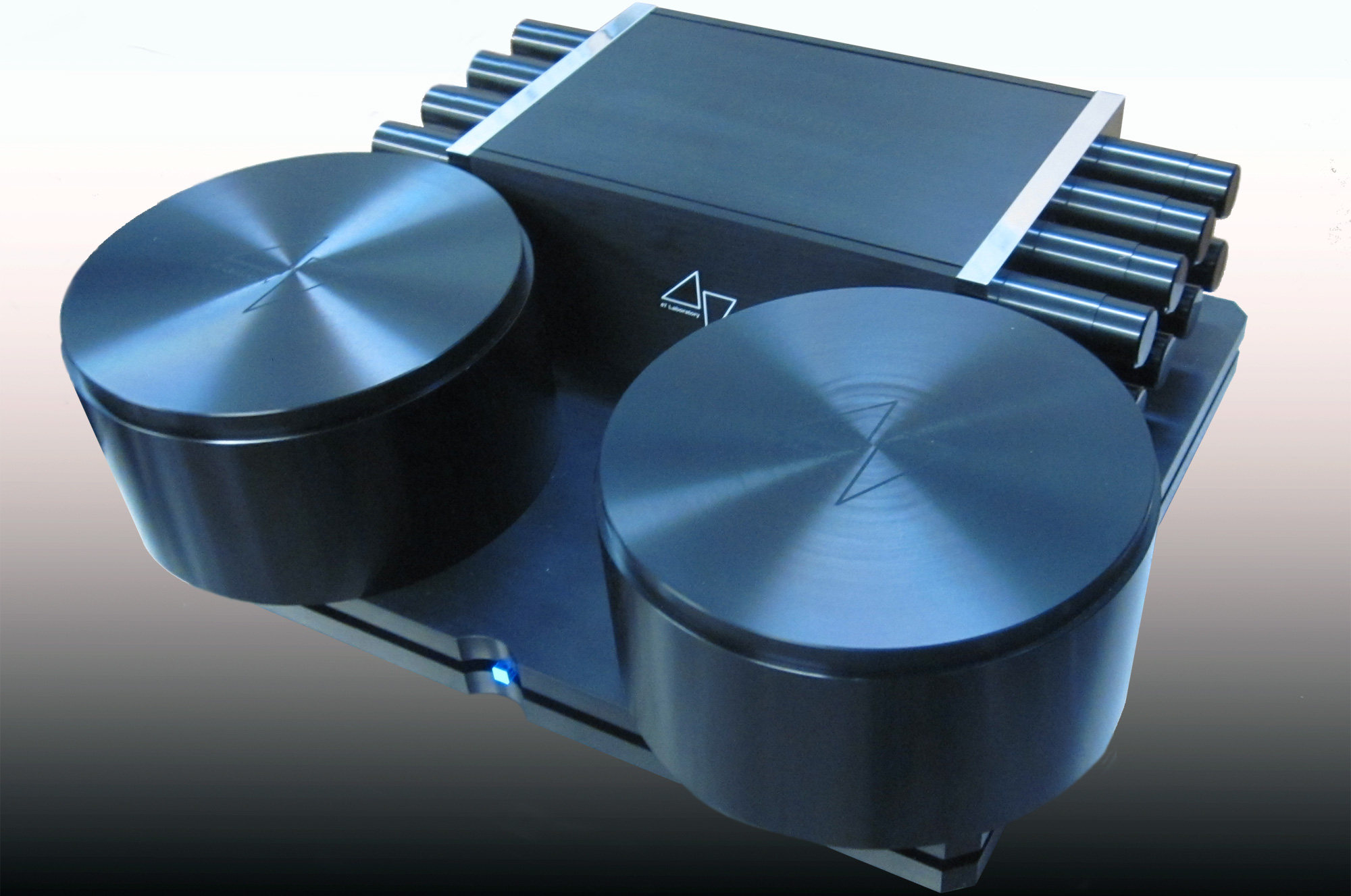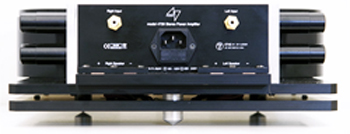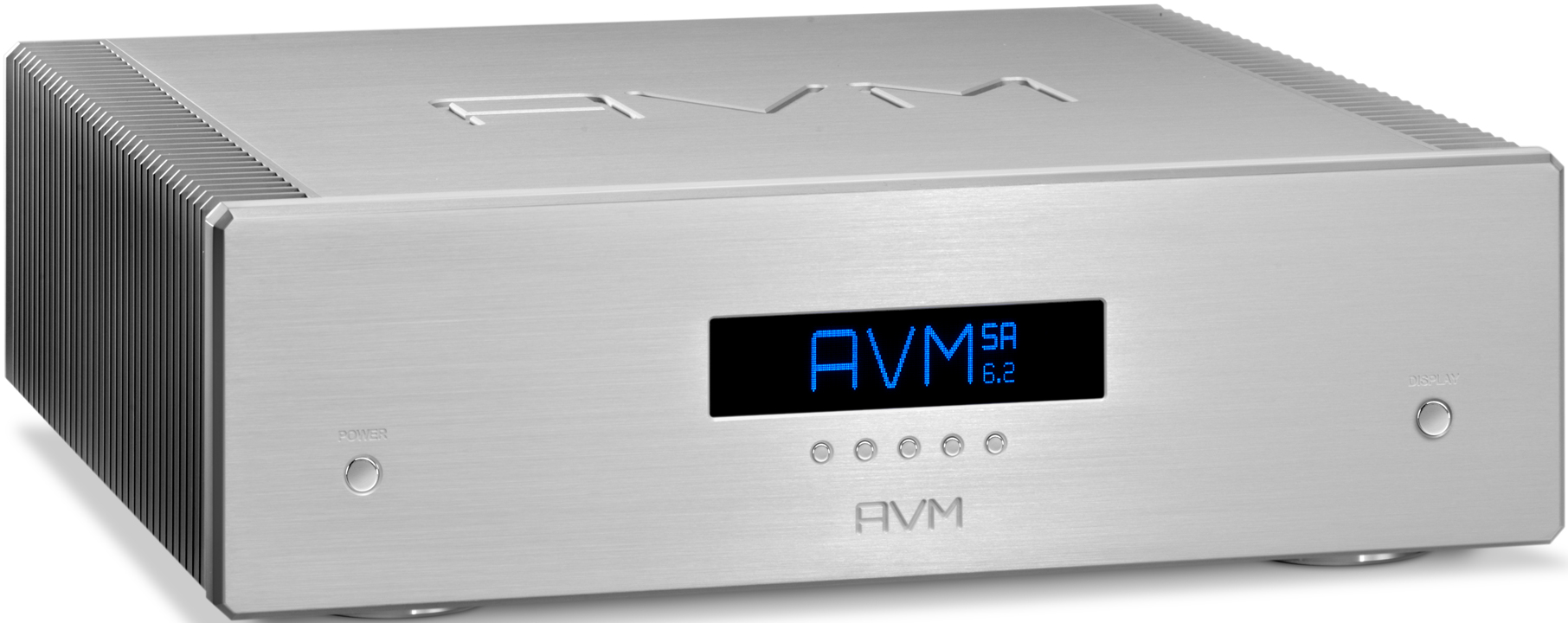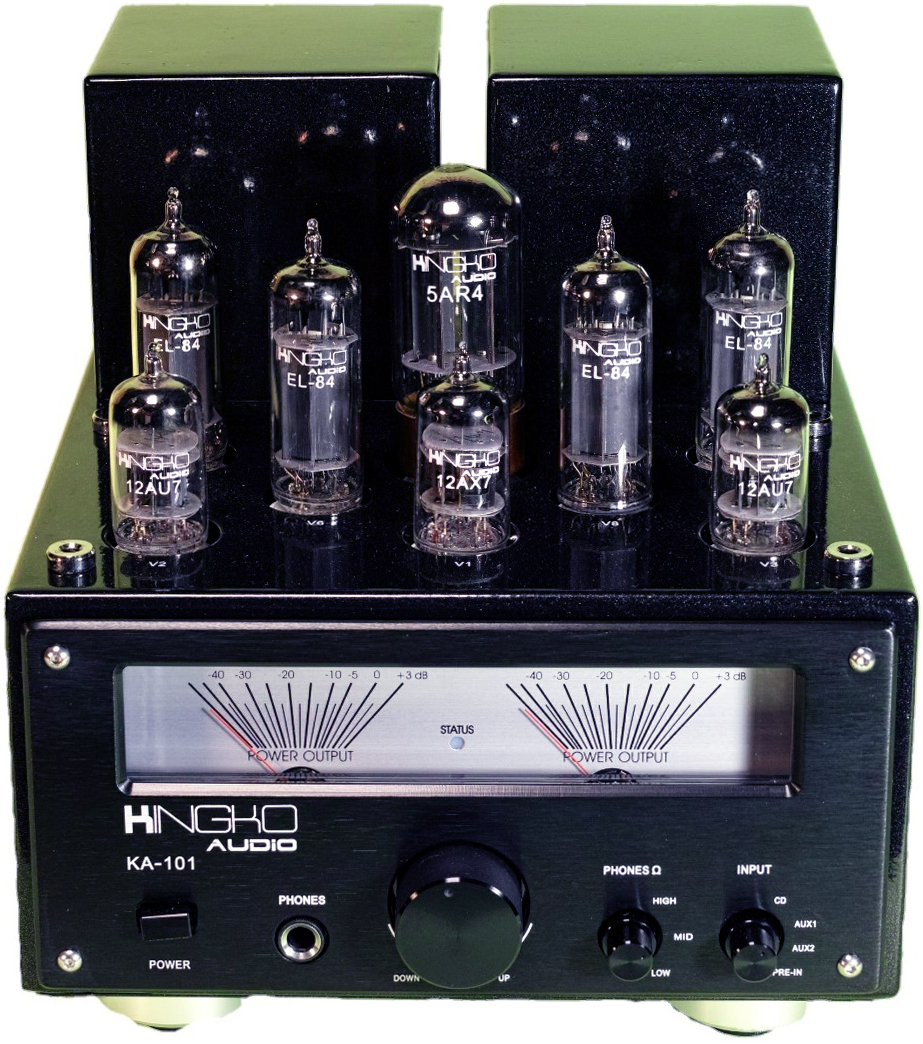![]()
“In a class of its own”
HiFi enthusiasts know their classes of solid state amps, the most commonly used ones being Class A behemoths that tend to run hot, Class A/B solid state designs that tend to run cooler and often yielding more watts per dollar, and Class D, or Switching (chip) amps, which are even less expensive and debatably offering higher performance precision. Enter Lucasfilm Ltd., known to seasoned film fans as the company founded by filmmaker George Lucas, who hired audio scientist Tomlinson Holman to revamp the audio chain in movie production from the set to the theater. The result was a certification program of standards called THX (trademarked) that was used for the first time in the production of “Return of the Jedi” in 1983.
Fast forward nearly 35 years later and we have Benchmark Media Systems, a HiFi component maker with one foot in the pro audio world and the other in the domestic sector of HiFi, collaborating with the THX program to make a new class of amplifier designated Class AAA. The “AAA” stands for Achromatic Audio Amplifier, an analogue amp that greatly reduces energy consumption. Some highlights of this technology include the use of both feedback and feed-forward error correction, accomplishing an almost non-existent distortion level of 0.0001% at 1kHz, greatly reduced power supply-induced distortion and noise, and a resultant signal-to-noise ratio (SNR) in excess of 132 dB A-weighted.
In terms of operational efficiency, rather than reducing the bias current, which typically has the effect of increasing crossover distortion, THX technology claims to allow high biasing while practically eliminating crossover distortion, and doing so with lower power consumption. Tracking Power Supplies that deliver power “on demand” usually introduce their own distortion, but THX’s AAA technology renders this negligible. The outcome is a seemingly perfect audiophile amplifier: Light with a small footprint, has the ability to drive demanding loads to full output with extreme integrity, has vanishingly low distortion and runs cool.
Benchmark Audio’s promotional brochure enthuses about the SNR ration in its discussion of the collaboration of Benchmark and THX, “… this is 30 dB greater than most amplifiers. That’s 30 times less noise than typical amplifiers – the perfect amplifier for a high-resolution audio playback system.” The Instruction Manual states, “132 dB is approximately equivalent to the noise performance of a perfect 22-bit digital system… At high output levels, the AHB2 [amplifier] remains virtually distortion free while driving heavy loads.” I translate that as, “We dare you to put this amp on the King Sound King III electrostatic speaker and give it a good run.” Better yet, I’ll do that as well as put the amp with the shockingly revealing PureAudioProject Trio15 PAP Horn 1 Speaker.
Supposedly, Star Wars (trademarked) has made your stereo amp better. The “THX Force” is with us audiophiles in the AHB2. When you conclude reading this assessment you will know whether I conclude Class AAAis aforce or a farce.
![]()
More settings than Star Wars installments
How many settings on a component does it take to make you happy? To arrive at an answer consider the two schools of component building; the first offers only one setting, one option for the sound, the other offers several settings and a variety of options for the sound. For the moment, putting aside the inherent differences between classes of amps, which is better : A monoblock design, or a much more involved design that offers modes such as Stereo, Mono, XLR and Neutrik outputs, and a gain setting selector? Your preference says much about you as an audiophile.
Over the years, I have careened back and forth on this question in regards to all components, even speakers, as there is a diversity of opinion among manufacturers in their products. It should give pause for consideration that there is no complete universal perspective in manufacturing, nor in listening, when it comes to the best sound produced by feature-poor or feature-rich components. There is a veritable chasm in the audio landscape today, on the one side featuring refreshed throwback designs, and the other displaying amps with digital management, onboard DACs and in some cases even room correction modes, to say nothing of systems with active multi-channel processing for stereo.
I recall my ten-band analogue Audio Control Equalizer that saw vigorous use, portending my development into a system builder exploring permutations of HiFi systems. It must have been more than 30 years ago when I first heard an audiophile authority say equalizers were not to be included in high-end systems. I thought it a stupid comment at the time, for how was a person to tailor their sound if not for all those channels of frequency control? Not too many years later, due to exploration of more streamlined systems, I reversed my opinion and concluded the same; the simplest signal path is the best. Yet, time and again as I built systems I encountered exceptions to that rule. Regularly, rigs that were not the simplest could attain a more gratifying sound. It wasn’t as simple as the straight-wire-with-gain principle suggested. That seems the case with components, even amplifiers, as well. Thus, the simplicity/complexity pendulum continues to swing over time.
“Night and day” difference
Currently, I have two sets of components, DACs and amps that represent the proverbial night and day difference from each other in terms of design. The simpler components are the Exogal Comet DAC and the Belles ARIA Mono Block Amplifiers, while the more complex components are the Benchmark DAC3 and the Benchmark AHB2 Amplifier. I say, simpler or complex with no implication or suggestion on any enterprise of whether their process of building any audio component is simple or not. I am reminded of the misnomer in Darwinian circles of calling a lower life form “simple”. There is no such thing as simple life. When in terms of complexity, a single celled organism, much less a strand of DNA, makes a supercomputer seem like an abacus, it’s never simple. Such simple life, as it is called, is lower than more advanced creatures but by no measure, literally when it comes to the statistical improbability, is it simple enough to just happen.
In referring to components as “simple” versus “complex” I am discussing the complexity of features of the design, that is, how many options for use are offered. This review is about the Benchmark products and will be discussed in the context of how strikingly feature-laden they are. The multi-faceted operation of the Benchmark DAC3 and AHB2 will be considered as how they may assist with building superior systems.
Which is better in terms of performance? Which assures the best outcome in system building? While this is one comparison of an endless range of possible comparisons, it will stand as an example to show the considerations involved in selecting an amp and the expected sonic outcomes. This begs the question; does the massing of features detract from the sound in comparison to more streamlined competitors?
The Belles ARIA Mono Block Amplifiers, also in for review, are representative of a simpler design principle. The ARIA has – get ready for it – a power button, one pair of RCA inputs, one pair of speaker terminals, and a 15A IEC port with fuse holder. That may have been a bit much to take in all at once, so let’s examine it. The ARIA has one signal path option only. You get no derivative, no options, no “second chances.” I have found that in system building, second and third chances in the form of alternative configurations are very helpful to attainment of pleasing, but not necessarily the most accurate, performance. In the case of a component with only one operational mode, it had better be astounding, because it gets one chance to impress.
We can apply the same discussion and questions to comparison of the Exogal Comet, previously reviewed by myself for Dagogo, and the Benchmark DAC3 DX. The Comet truly is a one-outcome DAC; whatever signal you feed it, the DAC formulates a parallel signal and forwards that to the amplifier. As with the ARIA, the Comet produces a consistent result, one chance to impress in any given system. Alternatively, the DAC3 DX has several adjustments allowing conditioning of the signal.
What good is configurability? The Benchmark DAC3 DX and AHB2 Amplifier can fail to be optimized several times through selection of less than ideal settings and still have the potential to come out on top. The pertinent question, then, is whether they may be so, attaining the caliber of an amp with a dedicated signal path and a DAC with an algorithm that is agnostic to the incoming signal. Let’s find out.
![]()
DAC3 DX rear panel
The Owner’s Manuals are available – all 117 pages of them
I used to attempt thorough explanation of manufacturers’ Owner’s Manuals in my reviews. The longer I am at the reviewing game and the more information is found online, the less inclined I am with the time I left in life to rehash a Manual in a review. I recall reading reviews years ago and scoffing at the imprudence of the reviewer who said, “Consult the company website…” Now, I consider that recommendation a stroke of genius; I just saved myself a few hours!
However, I will summarize the notable features of the DAC3 DX:
3:1 summing on the main outputs. The ES9028PRO [DAC chip] is an 8-channel 32-bit converter. Three channels are summed for each of the stereo outputs, while the remaining two channels provide the auxiliary outputs. (Note: If you hook up your amp to the Auxiliary outputs you will not be getting the best processing of the DAC3 DX!) Harmonic compensation is the name given to the ESS chip’s capacity to remove most 2nd and 3rd harmonic distortion of the D/A converter.
High Headroom Digital and Analogue Processing prevents clipping of inter-sample overs (see Instruction Manual for further details).
High Efficiency, Low Noise Power Supplies
UltraLock3 Clock System provides outstanding jitter attenuation.
Asynchronous USB Audio 2.0 supports DSD and 192 kHz, 24-bit PCM
32 Bit Digital Gain Control uses a motor-driven volume control to set the gain of a 32 bit dithered digital gain control, “The volume control is a servo-driven analogue potentiometer… produces a DC voltage that controls the gain of a dithered 32-bit multiplier. The outputs of the multiplier drive the 32-bit D/A converters.”
Native DSD Conversion accepts incoming DSD signals via the USB or Coaxial inputs. The signal is routed to a bank of 1-bit DSD D/A converters. Three balanced 1-bit converters are summed together for each of the MAIN outputs.
![]()
1W Amp Crossover Distortion
For those who want something technical to chew on in regard to the amp, the Appendix of the AHB2’s Instruction Manual contains two pages of dense, technical discussion. Here are some highlights: There are two amplifiers inside the chassis, a Class H, and a Class A/B with feed forward error correction, “Each channel of the AHB2 is equipped with a main amplifier and an ultra-clean low-power auxiliary error-correction amplifier.” The A/B amp does the bulk of the work, while the auxiliary amp provides a low power error correction signal. The error-correction amp actively drives the output as the A/B amp transitions between push and pull states. Crossover distortion associated normally with A/B designs is all but eliminated. Multiple power supply rails and tracking power supply rails are used in the design, and along with the feed-forward error correction they do not produce significant distortion as in most A/B amps. In addition, a switch-mode power supply is used with switching frequencies above the audio band, and in lieu of stored energy in capacitor banks, Benchmark seeks to nearly eliminate all storage after the power supply. Power supply regulation takes the place of energy storage, causing the amp to respond quickly to peak loading, and makes it immune to AC line voltage fluctuations. The AHB2 also has a digital monitoring system that monitors all critical functions, providing comprehensive protection from overload and fault conditions.
VAariants of the DAC3
There are three variants of the DAC3:
DX under review (only digital inputs; 2 Toslink, 2 Digital Coaxial, 1 USB and 1 AES/EBU input; two pair RCA outputs and 1 pair XLR outputs; two front headphone outputs);
HGC (2 pair Analogue inputs, 2 Digital Coaxial inputs, 2 Toslink inputs, 1 USB input; 2 pair RCA outputs, 1 pair XLR outputs; two front headphone outputs);
L (same as HGC, but without the twin front headphone outputs).
Study the features carefully, as the units are similar but different in potentially critical ways in terms of setup of systems. You do not want to order one of them only to find that down the road you are limited in setup, i.e. ordering the model without headphone outputs. For instance, am I taking a risk by using the DAC3 DX that I will not need analogue inputs? Yes, however, I have fallen into the habit of not adding a preamp to the signal path if I use a DAC having an integral volume control. That would result in duplication of gain stages, which typically muddies the system sound.
Cramming in all the functions
In terms of user-friendliness, Benchmark and Nagra may have a competition on which company can jam the most features into the smallest component. The only other DAC I have used that is so cramped is the iFi Micro DAC, and it is portable. Forget trying to spy the functions indicated by the blue LEDs on the face of the DAC 3 DX from your listening position, just memorize where those LEDs are. Learn also the flashing patterns of the LEDs and you will be fine in terms of daily use.
The speaker connection posts are not very practical. I hate the encapsulated posts that are becoming popular, forcing entry by spade terminations from underneath. I get it, more protection against spades slipping and potentially causing a short. But if the speaker cables have stiff, long leads – and many do – it’s a PITA. Benchmark has allowed little leeway between posts, inputs and switches. Must studio wonks attempt to cram everything into one inch? I have been in a few studios around the world and many have precious little room, so I get the idea of space saving designs. Home users should expect a touch of frustration with hooking up leads. Get used to it, as it’s worth it. When it’s put together you will forget all about it.
If the DAC3 DX doesn’t work in your system, you likely set it up wrong. I couldn’t get a signal out of it at all when I first fired it up, even though Tidal and ROON were synced perfectly. Well, almost perfectly. I surmised that any product with 75 pages of instructions might have a setting I was overlooking. Sure enough, it was set to receive USB 1.0, not USB 2.0, the current standard. A push and hold of a button, followed a few LED flashes I should memorize, and I was up and running. It should be said that incorporating the DAC3 DX with ROON and Tidal was the most trouble free setup of any DAC I have ever used, and it has been flawless in terms of operation. Some DACs I have used needed a series of starts and restarts to get the Salk StreamPlayer III, Tidal and ROON to interface permanently, but the DAC3 DX has presented no problems in that regard even when pulled out and reinserted into the system.
Manufacturers such as Benchmark and Exogal know a great many audiophiles despise diminutive indicators, yet they keep building them. Exogal does so to nudge users toward controlling their products with tablets or smartphones, while Benchmark caters to studios as well as domestic users. When the DAC3 DX sits three feet from you, the layout is obviously smart. It is a case where Benchmark builds for the pro market and also sells to the audiophile market. If the appearance and a traditional aesthetic steers your spending habits, then the Benchmark DAC3 DX is not for you.












































